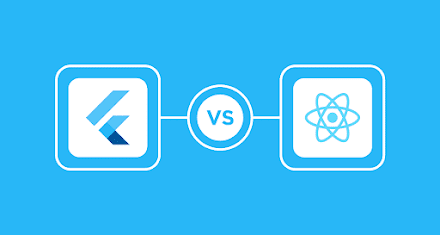Flutter vs React Native: Choose The Best Framework For Your Project
The selection of a framework is dependent on the application’s requirements. We will be discussing Flutter vs. React Native Performance. This helps developers to choose the best platform for creating a targeted and results-driven application.
Both frameworks can be used to meet requirements. Developers must consider product scalability when choosing a framework.
Linearloop, a well-known Flutter app development company in India and USA, believes that the correct selection of technology increases the productivity of an application.
Both technologies are available to us. Let us know if you need any assistance or to hire react Native Developer in India.
There is a difference between Flutter vs React-Native:-
We will be discussing Flutter and React Native app development based on certain parameters. Technology is not worthless, as we know. It all depends on the environment and the circumstances.
Let’s now look at the differences that Flutter has to offer over-reactive native 2022.
Coding Language:
React Native:-
React Native uses React JS (JavaScript), to create a user interface. According to reports, JavaScript is a popular programming language and web app developers are familiar with it.
This makes it easy to find experts in this field.
Flutter:-
Flutter uses the Dart programming language created by Google. Dart also uses OOPs (Object Oriented Programming), like Java and C++.
Flutter can be learned easily by those who are familiar with these concepts. Research have shown that JavaScript is preferred by developers to Dart.
Architecture:
React Native:-
We have already stated that React Native is based upon JS. Here, the interaction between JavaScript & the native language is handled through a JS bridge.
Both sides can communicate with one another using JSON messages. This synchronized messaging process ensures that the application’s UI is seamless. There is a possibility of UI lagging because the bridge can affect the rendering speed.
Flutter:-
Flutter does the opposite. It doesn’t need any bridge to communicate with native components. Everything is included. It also comes with Cupertino & Material Design types of frameworks.
Flutter’s foundation also made applications more predictable and stable in different environments than React Native.
Installation & Configuration:
React Native:-
It is easy to install and configure react-native. React-native CLI can be installed globally via the command line. Yarn and Node must be installed as package managers.
Flutter:-
To download Flutter you will need to first download the binary for your mobile platform. The next step is to add the binary to your variable PATH. This can be done via the command line.
Flutter is more complicated than react-native. This point is in favor of react-native.
Documentation & tools for development:-
React Native:-
It provides standard documentation that JavaScript users can understand.
Because of the lack of documentation on generic features like navigation, documentation is centered around mature developers. Apart from that, getting information about the new terminologies/libraries is challenging here.
Flutter:-
Flutter’s enhanced documentation shares detailed guidelines via video and graphics tutorials. The framework also includes powerful development tools that provide complete support for developers.
Flutter is preferred by developers because of its focus and speed. Flutter’s two main tools are Debugger (and Flutter Inspector), which offer developers support.
User Interface:
React Native:-
The framework renders native elements for each platform thanks to the JS bridge. It also helps to create an appealing interface for iOS and Android app development.
React-native has in-built components that allow developers to design more easily.
There are also challenges. React Native can make complex UIs unusable, and components might behave differently on different platforms.
Flutter:-
Flutter comes with built-in widgets, making it easier to build a native app with a pleasing UI. This library provides a wide range of widgets for the framework, eliminating the need to use third-party libraries.
Quick comparison Flutter vs react-native 2021:
You can summarize the entire discussion in the table. Here’s a quick overview of Flutter vs. React 2021 if you run out of time.These are some of the most popular React Native applications.
Facebook
Instagram
Skype
Airbnb
Walmart
Pinterest
Tesla
Flutter is used in some of the most popular applications
Alibaba
Google Ads
Reflect
Hamilton Musical
My Leaf
Groupon
Topline
Flutter vs. React Native Tomorrow
Aspirants are always concerned about the future. They prefer to only learn technology that offers financial stability. It is perfectly acceptable.
We want to share our experiences before we compare Flutter and React Native future. Technology is constantly changing and best mobile app developers are always learning and improving their skills.
If you want to make more money, then you need to be open to learning more.
Conclusion:
Soft Suave is a prominent Flutter and React Native company in India. We know the efficiency and approach of each technology. We have specialists in both technologies.
We have also successfully implemented many projects that use these technologies around the world. We are also your exclusive partner if you need to hire flutter app developers.
There is no winner or loser between Flutter and React Native, each one contributing to the development of applications.
Therefore, it is important to understand the requirements of your project and choose the best technology. Feel free to contact us if you have any questions about React native developers. We are more than happy to help.




Comments
Post a Comment